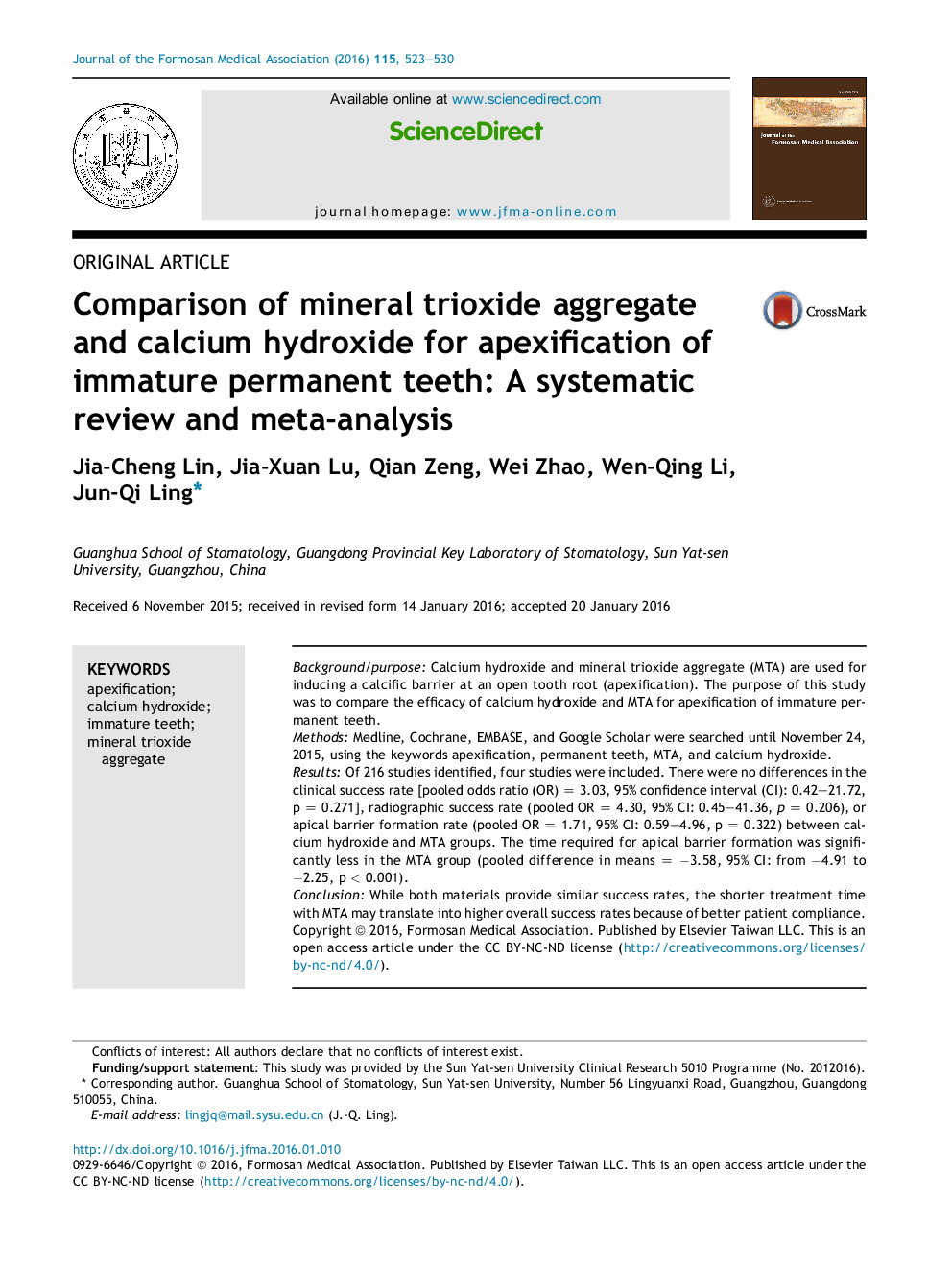| Article ID | Journal | Published Year | Pages | File Type |
|---|---|---|---|---|
| 3478325 | Journal of the Formosan Medical Association | 2016 | 8 Pages |
Background/purposeCalcium hydroxide and mineral trioxide aggregate (MTA) are used for inducing a calcific barrier at an open tooth root (apexification). The purpose of this study was to compare the efficacy of calcium hydroxide and MTA for apexification of immature permanent teeth.MethodsMedline, Cochrane, EMBASE, and Google Scholar were searched until November 24, 2015, using the keywords apexification, permanent teeth, MTA, and calcium hydroxide.ResultsOf 216 studies identified, four studies were included. There were no differences in the clinical success rate [pooled odds ratio (OR) = 3.03, 95% confidence interval (CI): 0.42–21.72, p = 0.271], radiographic success rate (pooled OR = 4.30, 95% CI: 0.45–41.36, p = 0.206), or apical barrier formation rate (pooled OR = 1.71, 95% CI: 0.59–4.96, p = 0.322) between calcium hydroxide and MTA groups. The time required for apical barrier formation was significantly less in the MTA group (pooled difference in means = −3.58, 95% CI: from −4.91 to −2.25, p < 0.001).ConclusionWhile both materials provide similar success rates, the shorter treatment time with MTA may translate into higher overall success rates because of better patient compliance.
